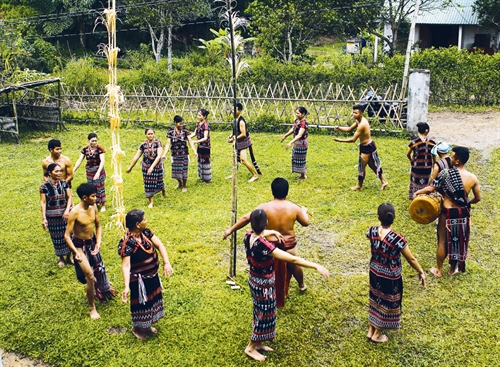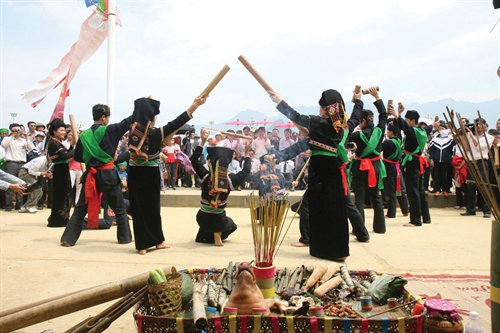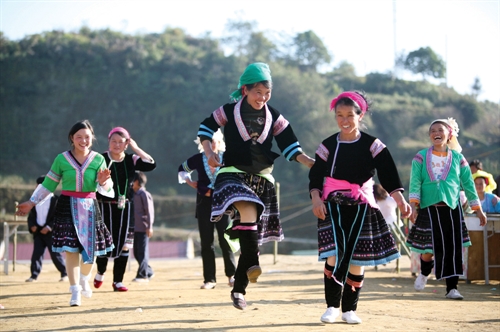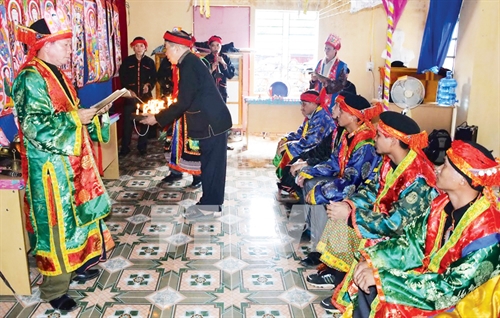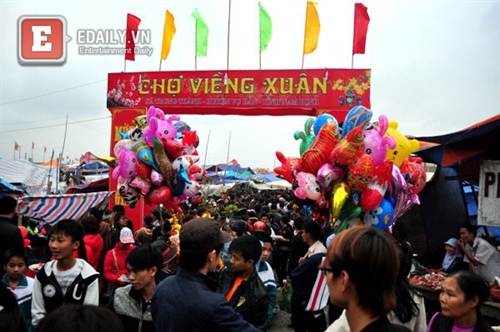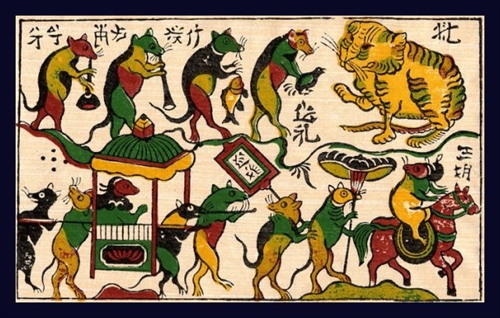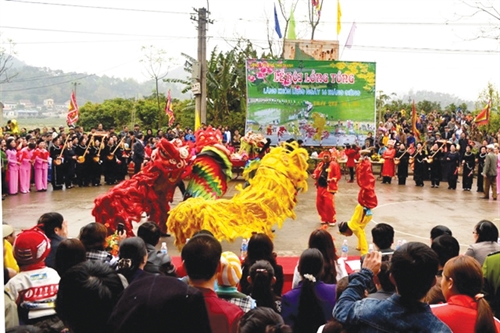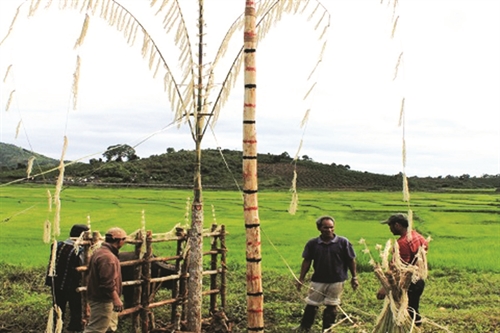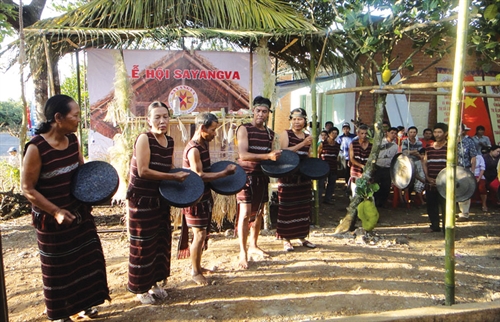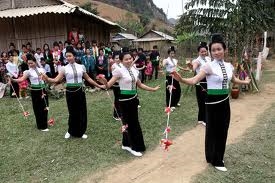>>The “Cham” ethnic minority - its customs and practices
>>The "Ka Te" festival of the ethnic Cham
>>The “Cham” ethnic minority - its customs and practices
Ta Thi Tam
Ethnology Institute
The Cham, also called Chiem, Chiem Thanh, Cham pa, Hroi, Hoi, Huan Cham or Cham Poong, is a Malayo-Polynesian language ethnic group living mostly in central coastal provinces of the country.
While the Cham Hroi, indigenous inhabitants of Phu Yen and Binh Dinh provinces, follows no religion, the Cham in Ninh Thuan and Binh Thuan provinces follows Hinduism (Brahminism) and Muslim.
The Cham Muslims live in groups in Ho Chi Minh City, southwestern Tay Ninh province and the Mekong River delta province of An Giang.
A traditional Cham village is named after a mountain, rice field or historical legend and under the administration of the patriarch and a council of religious dignitaries. The patriarch also holds the highest position among the village’s religious dignitaries.
Pagodas, mosques or temples are specific symbols of the Cham villages and origin.
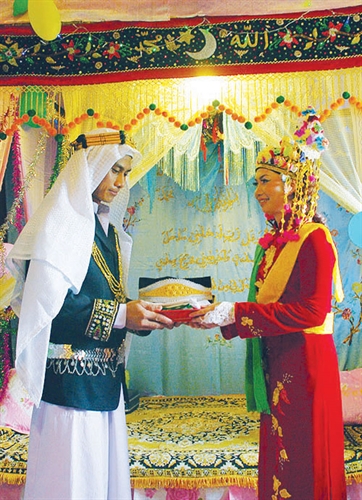 |
| After completing all wedding rituals, a Cham bride will |
am families live in harmony in their village and join community rituals such as ceremonies to pray for bumper crops or rain. Although the village’s conventions or written rules do not exist, Cham people have fine practices of helping each other in production as well as in weddings, funerals and building homes. However, since the initiation of the national renewal in 1986, together with the development of the market economy and commodity agricultural production, they have changed to pay others for help in farm work.
At present, two social systems exist in the Cham community - matriarchy in the Hindu Cham group and patriarchy in the Muslim Cham group. In the matriarchal system, each clan is headed by a woman who is often the eldest sister of a family of the first line of descent. Her advisor is her eldest brother.
Nowadays, most heads of the Cham clans are voted by their members. The traditional maternal family in the Cham society is being replaced with a nuclear one with the father representing the family in its relations with other people and families in the community. Although men’s role in the families’ relations has improved thanks to the right to land inheritance which used to belong to women and children are now given the father’s family name, this does not help men to build a patriarchal genealogy as each generation belongs to a different clan.
Cham people attach great importance to maternal clans than paternal ones and they are grouped into small and big clans. A clan plays an important role on each member, first of all deciding on the conformity of a marriage with the clan customary law. The head of the clan is invited to represent a family in organizing a marriage for its child.
Each clan shares a graveyard and common property such as cult-portion fields donated by its members, the family name and a common fund. Big clans are divided into small family groups that also share common property and a graveyard.
A Cham clan’s common fund is founded with financial contributions of its member families, especially well-off ones that are successful in production or trading. It is used for organizing important rituals to preserve the Cham culture.
Community management
The Cham community is managed through a hydraulic work-governing board, a council of village notables, a council of clerics, and a management board of mosques or a representative committee of Muslims.
The hydraulic work-governing board is elected by villagers to protect, repair, upgrade and develop the local system of hydraulic works and ensure equal water supply for villagers’ cultivation areas. The board can mobilize financial and human resources for a common purpose. It is responsible for organizing farming-related rituals. In the past, it used to receive material benefits contributed directly by households in the village, but now it operates with the village’s fund.
The council of village notables is composed of prestigious elderly who are knowledgeable about Cham customs and traditions, intellectuals and successful individuals. The council is intended to educate children about traditions and customs and work with local authorities to handle violations of the community’s customs. It also cooperates with state agencies in organizing village rituals and festivals.
The council of village clerics has one or two capable clergymen from each clan. The council members take charge of religious affairs, monitoring and organizing religious rites. They have to strictly abide by the religious rules and will be punished if violating them. Yet, they always receive respect from the community members as they are exemplary symbols in preserving the Cham culture.
The management board of mosques and representative committee of Muslims are religious bodies with close relationship with local authorities. An official member of these bodies must be a member of the commune-level Vietnam Fatherland Front Committee, who acts as a link between the religion and the grassroots administration.
Traditional cuisine
Religious differences in the Cham society have created diversities in their cuisine. Muslim Cham people have a taboo against eating pork while Cham Hindus refrains from eating beef but the Cham Hroi in Phu Yen and Binh Dinh provinces eats both pork and beef.
The Cham people have three meals a day - breakfast, lunch and dinner - with rice, maize, sweet potato and bean as the main food. Other foods differ across the regions where the group lives. Muslim Cham in the central region eat meat and processed meat products and arrange food in trays and use chopsticks and bowls like Kinh people. Meanwhile, the Hindus Cham in the south eat fish and shrimps and arrange food on plates. Both groups always pray before meals.
The Cham people, both Hindus and Muslim, organize a big meal for people in their religious groups to celebrate the traditional Lunar New Year (Tet) and on this occasion, they eat food with their hands. For Muslim Cham, only religious dignitaries, outstanding intellectuals and male followers are invited to meals held in a mosque where people eat food with their hands. Salt, chicken and goat meat are offered to their god Allah. Cham dignitaries do not eat white gourd, purslane and frogs. Muslim Cham strictly observe the holy month of Ramadan when they do not cook and abstain from food and drink from dawn to dusk but have only cold food after sunset.
Farming practices
The Cham classifies their cultivation land into one-crop and two-crop fields and grows rice on low land, wet land and at the foot of a mountain or hill. They start their new crop in February or March of Cham calendar which has 12 months, including six 29-day months and six 30-day months. The first 15 days of a month are solar days and the rest, lunar days. Cham people regard the first day and a few final days of a month as bad for cultivation and production but Tuesdays are good for farm work and Saturdays for harvest and sun-drying rice. With dozens of white and sticky rice varieties, the Cham grows high-yield white rice in the winter-spring crop and specialty sticky rice in the summer-autumn crop in wet fields.
According to the Cham customary law, stabbing buffalos, burning houses and marrying another person’s wife are the most severe crimes. Therefore, they raise cattle for sale, not for slaughter.
Apart from farming, the Cham people also live off fruit and vegetable picking, hunting and fishing. Hunting and fishing are men’s work while fruit and vegetable picking is women’s and children’s. Fruits, vegetables and hunted animals are used in their daily meals while traditional herbs can be sold to improve the families’ lives.-
